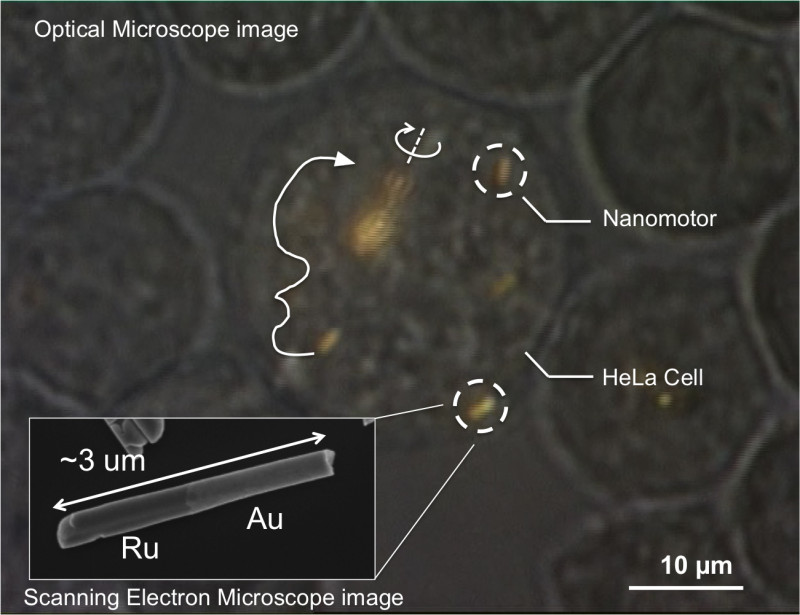Scientists have been able to not only place but also control nanomotors placed inside living human cells for the first time ever. This is a huge achievement and opens the path for numerous new applications for medical science.
Until now, nanomotors could easily be placed inside cells but these weren’t living human cells. That’s because these tiny pieces of metal needed toxic fuels to help them steer their movements. But a new method of controlling the movement of these nanomotors has been devised.
This method involves powering up the movement of the nanomotors using ultrasonic waves in combination with a magnetic field which is not harmful to the cells itself. Using this new method, scientists have finally been able to place these nanomotors inside living cells and steer their movement without causing any damage
Tom Mallouk of Penn State University, who has been a part of the research team that accomplished this, sees immense potential as a result of this break-through. According to him, ‘This research is a vivid demonstration that it may be possible to use synthetic nanomotors to study cell biology in new ways. We might be able to use nanomotors to treat cancer and other diseases by mechanically manipulating cells from the inside. Nanomotors could perform intracellular surgery and deliver drugs noninvasively to living tissues.’
While this is great news, it will still be a while before such a technology could be used on living animals. For now, the research is limited to detached human living cells which are not inside a living being. To reach that stage, the research will have to be tested first on living animals and according to Mallouk, it may be a decade before that happens.
Source: Penn State University/BBC
[ttjad keyword=”gps-device”]




